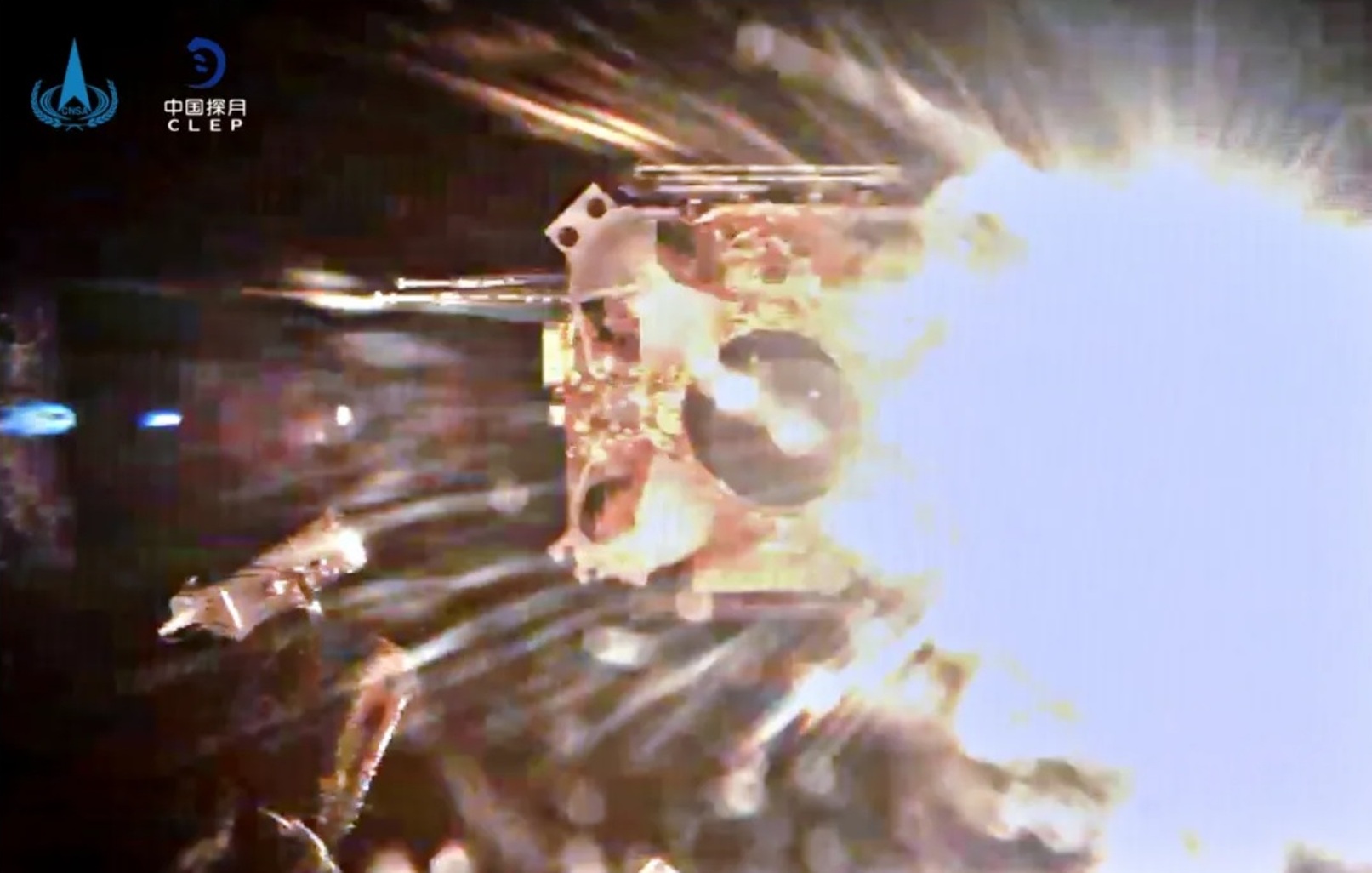For the first time in more than 40 years, a robotic spacecraft has blasted off from the Moon – and for the first time ever, it’s a Chinese spacecraft, carrying precious lunar samples back to Earth.
The ascent vehicle for the Chang’e-5 mission fired its engine and rose a region called Oceanus Procellarum at 1510 UTC (11:10 p.m. Beijing time) on December 3rd, the China National Space Administration’s China Lunar Exploration Project reported.
Imagery sent back from the Moon provided a view of the blastoff from ground zero. It was the first successful lunar launch since the Soviet Luna 24 probe took off during a sample return mission in 1976.
Chang’e-5 is the third Chinese spacecraft to land on the moon, but it’s the first to collect samples destined for return to Earth. And mission managers say it’s a full load, amounting to as much as 2 kilograms of material.
The collection effort relied on a robotic arm equipped with a scoop, as well as a drill capable of going as far as 2 meters beneath the lunar surface. The mission plan called for spending no more than 48 hours on sample collection between the landing on December 1st and the liftoff. But mission managers said the equipment worked so well that the sample container was filled with plenty of time to spare.
Before liftoff, the probe deployed a Chinese flag, which CCTV said represented China’s “first ‘independent display’ of the national flag on the surface of the Moon.”
Chang’e-5’s hardware consists of the lander, the ascent vehicle, the transfer vehicle that brought the probe to lunar orbit, and an attached Earth-return capsule. After blasting off from the lander’s launch platform, the ascent vehicle will rendezvous with the transfer vehicle in orbit and secure the sample container in the Earth-return capsule.
Mission managers said the transfer vehicle would continue to orbit the moon while waiting for a suitable opportunity to start the days-long trip back toward Earth. Sometime around December 16th, the transfer vehicle is expected to make an Earth flyby and drop off the Earth-return capsule. That capsule is designed to go through atmospheric re-entry, open its parachute and touch down in Inner Mongolia.
A recovery team would then bring the samples back to Chinese labs for study.
The place where Chang’e-5 landed, in the vicinity of a lava dome called Mons Rümker, is thought to have been formed 1.2 billion years ago – which is relatively recent in geological terms. If Chang’e-5’s samples make it safely back to Earth, they’re likely to be the youngest samples of lunar regolith ever dug up and brought back. Studying such samples could lead to new insights relating to the evolution of the Earth-Moon system.
NASA hasn’t brought back samples from the Moon since the last Apollo mission in 1972, but it’s ramping up its Artemis program to send astronauts to the Moon (and bring back lunar material) by as early as 2024.
NASA and its partners are also working on a campaign to bring samples back from Mars sometime in the 2030s. One of the primary objectives for NASA’s Perseverance rover, which is due to touch down in Mars’ Jezero Crater next February, is to collect and store samples for such a return mission.
The procedure for bringing Martian samples back to Earth is likely to be similar to the one used for the Chang’e-5 lunar mission.
Lead image: A camera on China’s Chang’e-5 spacecraft captures the moment of ignition for the ascent module, taking off from the lunar surface. Credit: CNSA / CLEP / Zhang Gaoxiang

